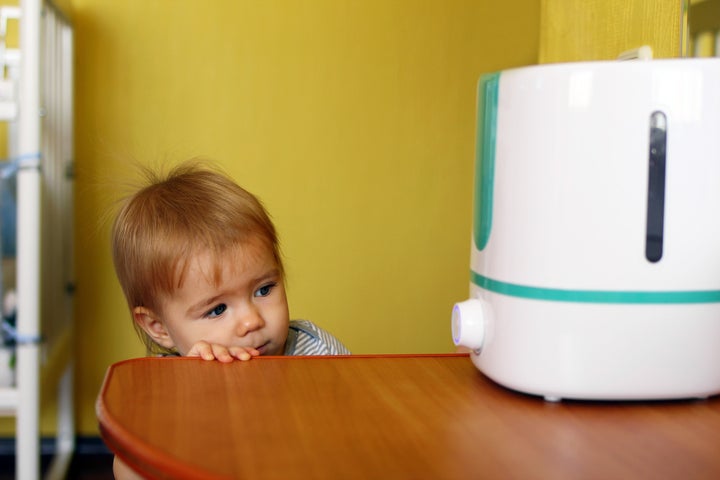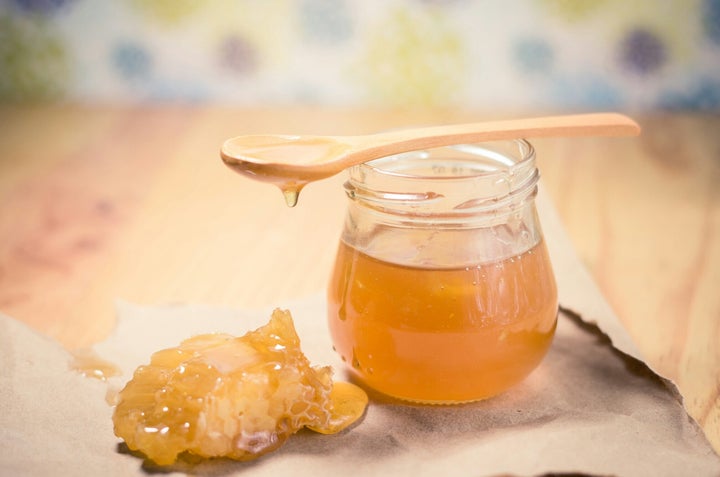
Back-to-school season has arrived, and with it have the classroom illnesses. For parents, this means preparing for lots of runny noses and scratchy throats in the months ahead.
There’s plenty of advice out there about how to ease symptoms of the common cold in kiddos. But who better to ask than pediatricians who are parents themselves?
Dr. Natasha Burgert — a pediatrician in Overland Park, Kansas, and a mother of two — told HuffPost she likes to keep a sort of ‘sick kit’ on hand so everything is in one place when illness strikes in her house.
“In my hall closet, you’ll find a wastebasket with all the essentials,” she said. “I can bring all the supplies into my child’s room, or wherever he is choosing to rest, to make care a bit easier. I just made sure all medications were out of reach when in my child’s space, keeping the acetaminophen, for example, on a high closet shelf.”
As the pandemic wears on, it’s important to note that COVID-19 symptoms in kids can be mild and similar to those they might experience with a cold — think congestion, cough or a low-grade fever. If you think your child may have COVID-19, contact your pediatrician to figure out the best course of action.
Below, pediatric medical experts reveal what they always keep on hand when their kiddos have a cold.
1. Fruits and vegetables that are rich in vitamin C
Produce that’s rich in vitamin C can nourish your body and boost your immune system, said Dr. Nadia Sabri, a pediatrician at East Tennessee State University in Johnson City, Tennessee, and founder of the site Mindful MD Mom. Good sources include oranges, grapefruit, berries (especially strawberries), red peppers, broccoli and Brussels sprouts. The sprouts might be a hard sell when your little one isn’t feeling well, but fruits can easily be added to a smoothie.
“If they don’t want the smoothie, freeze the leftover smoothie into popsicles,” Sabri said. “There are lots of creative ways to add in healthy foods, even if kids are not feeling well.”
Dr. Yami Cazorla-Lancaster, a pediatrician in Yakima, Washington, and founder of Veggie Fit Kids, also relies on antioxidant-packed smoothies when her children are sick, especially if they don’t have much of an appetite.
“Smoothies are a great way to maximize the intake of high-antioxidant foods like leafy greens, berries, herbs and spices,” she said. “I developed my own antioxidant smoothie and I provide the recipe to my patients during the winter months when upper respiratory infections are more prevalent.”
Though some parents swear by vitamin C supplements like Emergen-C Kidz to shorten the duration of a cold, there isn’t strong scientific evidence to support the benefits of these high doses. So you’re better off focusing on getting vitamin C to your kid via a well-balanced diet.
2. A cool-mist humidifier
It’s crucial for kids to get a good night’s rest when they’re feeling under the weather. But with nasal congestion, it can be a struggle to fall and stay asleep. Using a humidifier in their bedroom can make your child more comfortable.
“Living in Colorado is particularly dry,” said Karen Gentile, a pediatric nurse practitioner at National Jewish Health in Denver. “When my daughter gets a cold, I make sure that my humidifier is very well-cleaned, and then I will run it in her room overnight to provide a little bit of extra moisture for her already irritated nasal passages.”

“I personally own a cool-mist humidifier to reduce any risk of burns from the warm-mist versions,” Gentile said. “Toddlers love to touch everything, including their humidifier!”
3. Children’s Tylenol, Advil or Motrin
In case of a fever or pain, Gentile always has children’s acetaminophen or children’s ibuprofen on hand.
“If my daughter has a fever but appears comfortable, I typically will not medicate her,” Gentile said. “However, when she appears uncomfortable, as with an ear infection, I do believe it is important to provide pain control so that she can sleep well and heal.”

Dr. Wendy Sue Swanson, a pediatrician in Madison, Wisconsin, and chief medical officer at SpoonfulONE, follows a similar philosophy when it comes to kids and over-the-counter medications: Treat the child, not the thermometer. In other words, if your kid has a slight fever but is otherwise in good spirits, then Tylenol may not be necessary.
“If your sweet human is bounding around the living room playing Twister and she feels warm to touch and you then confirm she has a fever with her sniffles — the thermometer reads 101.7 degrees — you don’t need to reach for acetaminophen,” Swanson said. “Keep her hydrated, have her cover her cough, and make sure she gets rest so her body can do the dirty work of clearing out the infection. The acetaminophen should be used when she’s achy, not feeling well, or not wanting to be herself because of overall yuckiness.”
And if you do need the Tylenol, make sure you’re giving your kid the proper dose based on their current weight, not based on their age, Swanson added.
4. Extra pillows
For kids over the age of 2, Dr. Jen Trachtenberg, a New York City pediatrician, recommends propping up your little one with some additional pillows.
“Keeping the head more elevated helps make breathing easier than if laying flat on [their] back,” she said.
5. Honey
A spoonful of honey is a great alternative to cold and cough medicines, which are not recommended for young kids unless advised by your child’s health care provider. (Note that babies less than 1 year old should not consume honey because of the risk of infant botulism.)
“Reach for a teaspoon of honey before anything in the medicine cabinet, as long as your little one is over 12 months of age,” Swanson said. “Research from 2007 found that honey has been found to help reduce nighttime cough better than over-the-counter remedies.”

To soothe your child’s scratchy throat, you can also add honey to a cup of decaffeinated tea along with some ginger and lemon, as recommended by Dr. Candice Jones, a pediatrician in Orlando, Florida.
6. Saline nasal spray and suction device
Keeping your babe’s small nasal passages clear of mucus is no easy feat — especially before they’re able to effectively blow their own nose. That’s where some saline nasal spray and a suction device like the NoseFrida come in handy.
“I will put a couple drops of saline into each nostril and then suction that nostril with a suction device,” Gentile said. “I use the NoseFrida because it is comfortable for my daughter and easy for me to use, but there are many suction devices available on the market.”
Gentile uses the saline and suction combo when her daughter wakes up in the morning, when she gets up from a nap and before bedtime.
“While it does not sound pleasant for the kiddo, with time and consistency my daughter became quite used to the process and is very cooperative now at age 2,” she said.
7. Chicken soup
When Trachtenberg’s kids are under the weather, she serves up a bowl of a sick day classic: chicken noodle soup.
“The warm liquid filled with nutrients, protein, [and] vegetables helps provide [the] body with nutrition, as well as fluid and salt [the] body needs to stay hydrated,” she said.
And a bonus: Breathing in the steam from the soup helps open the nasal passages.
8. Disinfectant wipes
When germs abound, Burgert breaks out the disinfecting wipes to clean high-touch surfaces.
“I keep the Lysol wipes near the sick kiddo to wipe on the solid surfaces near them — bathrooms, light switch, remotes, game controllers,” she said.
9. A water bottle
Cazorla-Lancaster always makes sure her kids stay hydrated when they’re not feeling well.
“Many children are not very hungry when they are sick, and that makes sense, because the body is trying to conserve as much energy as possible to fight the infection,” she said. “Staying hydrated allows our bodies to perform all its vital functions. In addition, becoming dehydrated will increase the malaise and fatigue we feel when sick.”